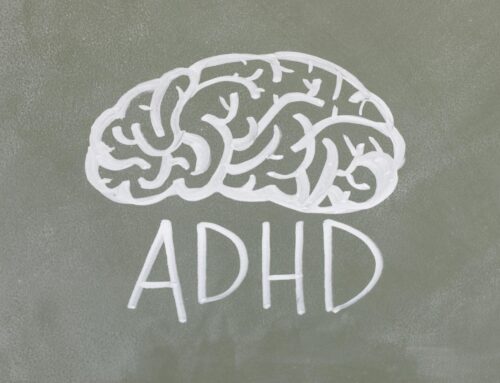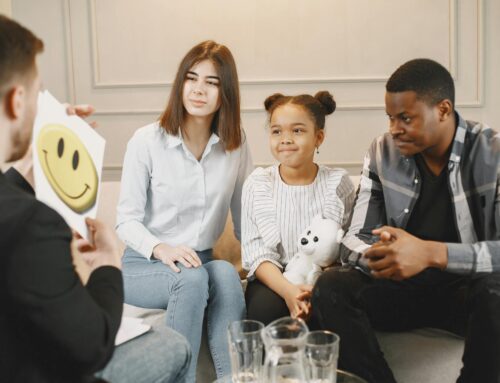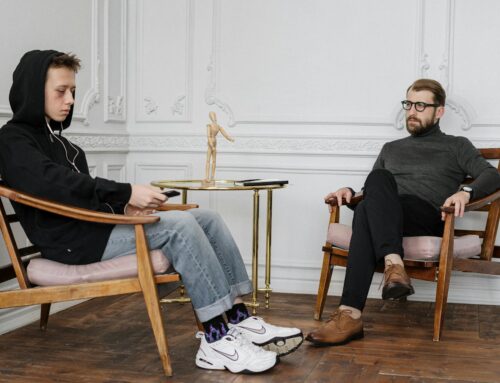Of all the formal training I have received as a clinical child psychologist, nothing compares to what I have learned from the children I have provided care for. Some years ago, I experienced something profound while talking with the mother of a child I was working with. (Note: details of child modified to protect identity; all examples of patients included in my writings are done so with explicit consent from family). The child was an 11-year-old boy with debilitating anxiety. Anything new or unfamiliar for this boy elicited an immediate distress response. His life had reached a point where he spent all his time at home, barely going to school, participating in extracurricular activities, or even playing with friends. As I was talking with his mother at one of our first appointments, she said something I will never forget. “I feel like I am in a dark forest, blindfolded, without the slightest clue of what to do,” she remarked.
This mother was doing everything she could to help her son and was doing it all without any semblance of a roadmap. Even as a seasoned clinician, I still find anxiety a complicated beast to understand. For a parent of a struggling child, the confusion is intensified. Childhood is a time for exploration, healthy risk-taking, and novelty seeking. Children are supposed to explore and discover the world they inhabit. It saddens me when anxiety slowly places a chokehold a child’s natural curiosity and desire for independence. In addition to helping children get free from anxiety’s grip, my job involves guiding parents on how best to support their anxious child. At the end of the day, there are four things I want every child to know when it comes to anxiety.
Surf the Wave
When we think of the word ‘anxiety,’ our minds often go to the persistent avoidance of feared situations, or the worries that run never ending laps in our minds. While those two are paramount in understanding child anxiety, I like to think it all starts with the physiological sensation (i.e., the feeling) anxiety creates. Anxious children usually fear not just the specific situations that elicit anxiety, but the uncomfortable physiological sensations that accompany anxiety. From a sinking feeling in their stomach, the nausea, sweaty palms, to feeling like their heart is beating out of their chest, a child understandably wants to avoid these uncomfortable feelings. However, as uncomfortable as these feelings are, they are safe and tolerable. If a child can learn to see these feelings as a “wave” they can surf through, as opposed to something they must run from, they will eventually learn to tolerate such sensations.
Having a Thought is Different than Buying a Thought
If someone were to ask me to “NOT think of a pink bear,” I will automatically think of a pink bear. We have little control over the thoughts and images that pop into our heads. An anxious child often experiences a myriad of anxious thoughts and worries. Trying to suppress such thoughts is at best unhelpful and at worst can amplify the thoughts. I want anxious children to learn that it’s OK to have worries and anxious thoughts, but we do not have to always “buy” our thoughts. In other words, we do not have to treat our thoughts as cold, hard facts. In my office, of all the toys and gadgets I have, none are more important than one particularly small toy, tucked away in the back corner of my office. It is a small piece of plastic poo, with eyes, a smile and a Santa hat. I call him “Mr. Poopy.” Inappropriateness aside, Mr. Poopy serves a very special purpose. When I explain to a child what an “anxious voice” is, I often use Mr. Poopy as an example. I explain to the child that when I experience an anxious thought or worry, I merely imagine Mr. Poopy verbalizing the thought. This helps me accept that I’ll always have anxious thoughts and worries that pop into my head. However, by imaging an animated piece of poop saying the worry, it reminds me that my anxious voice is often silly and one I need not always take seriously. Whether it be a talking toilet, Bart Simpson, or SpongeBob SquarePants, I encourage children to create their own silly, external manifestation of that “worry voice.”
You can Boss Back your Anxious Thoughts
A child’s anxious voice can often be intense and tenacious. Oftentimes, this anxious voice can bully children into avoiding or escaping many safe situations. Take for example a 9-year-old girl who is understandably nervous before the first day of school. Her worries are practically begging her not to go to school, “Don’t go! You won’t make any friends, and no one is going to like you” her worry voice insists. She may very well be inclined to listen to these thoughts and do everything in her power to avoid school. Instead, however, she could boss back those bullying thoughts. She could go into detective mode and take a closer look at just how accurate her worries are. She may say, for instance, “Hold on a second! I don’t know that this new school is going to be bad. I’ve been able to make friends before so why I won’t be able to do it now?” Children who learn to self-talk in this way are better able to neutralize their worries and anxious thoughts that fuel anxiety.
Feel the Fear and Do it Anyways!
One of the joys of my job is helping children see how great it feels to be brave. Anxiety has an uncanny talent for pressuring children to avoid many important parts of life from school, social events, or milestones such as getting a driver’s license. Years ago, I experienced my own bout of anxiety over public speaking. I wanted nothing more than the anxiety around my presentations to vanish. One day I saw someone wearing a t-shirt that read, “feel the fear and do it anyways.” There was something uniquely comforting about this message. It was not the cliched “have no fear!” message I had heard before. It was almost as if I had permission to feel anxiety; permission to bring anxiety along for the ride without it preventing me from doing what I wanted to do. With children, I encourage them to accept that the anxious feeling is going to be along for the ride. Victory does not mean ridding ourselves of that anxious feeling. Victory means not allowing anxiety to stop us from doing all the meaningful things in life we desire to do. In other words, feel the fear and do it anyways!
If you are a parent of a child struggling with anxiety, you are not alone. This blog is meant for educational purposes only is not a substitute for quality therapy. Talk to your child’s doctor about various therapy options for childhood anxiety. When looking for a provider it is important to find someone who specializes in child anxiety or at least has experience in working with these concerns in children. Finally, there are a lot of therapies out their claiming to be effective at targeting anxiety, some of which have no scientific support. For information on evidence-based therapies for children, check out www.effectivechildtherapy.org.






